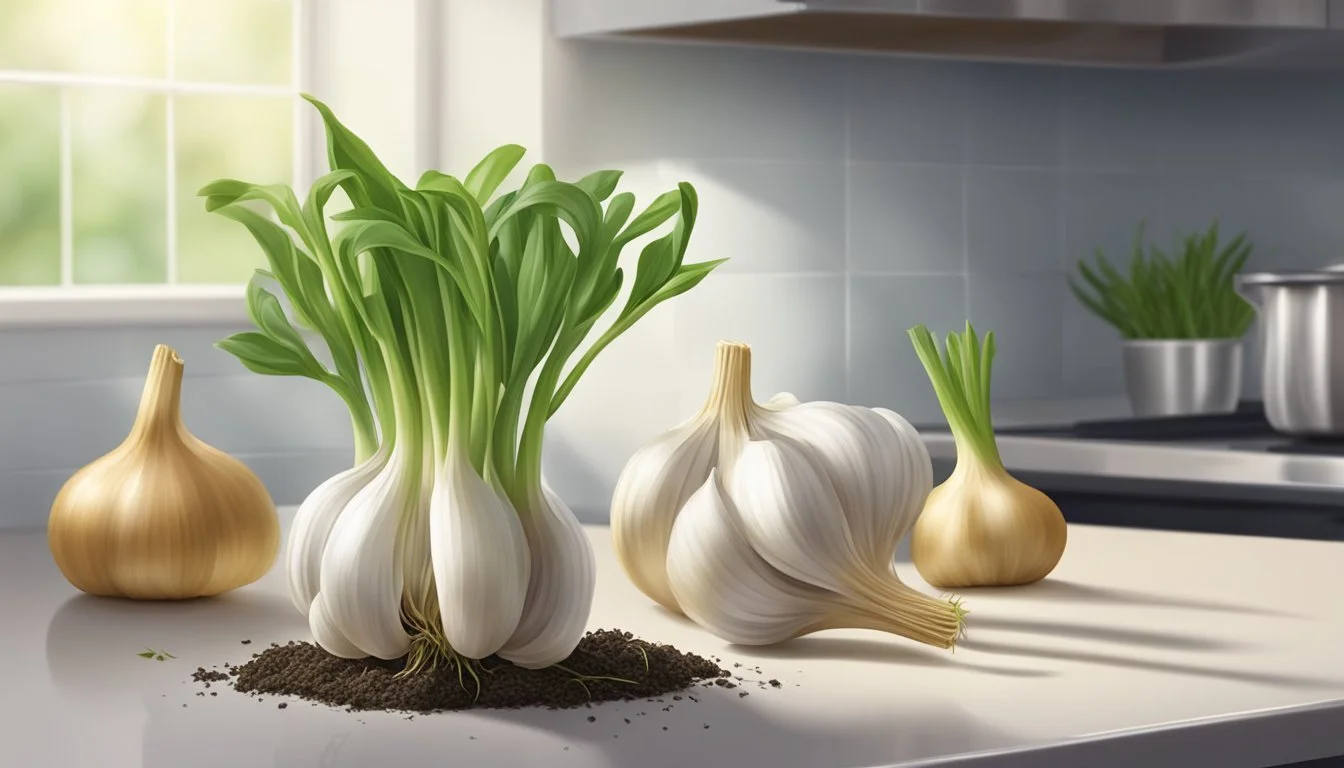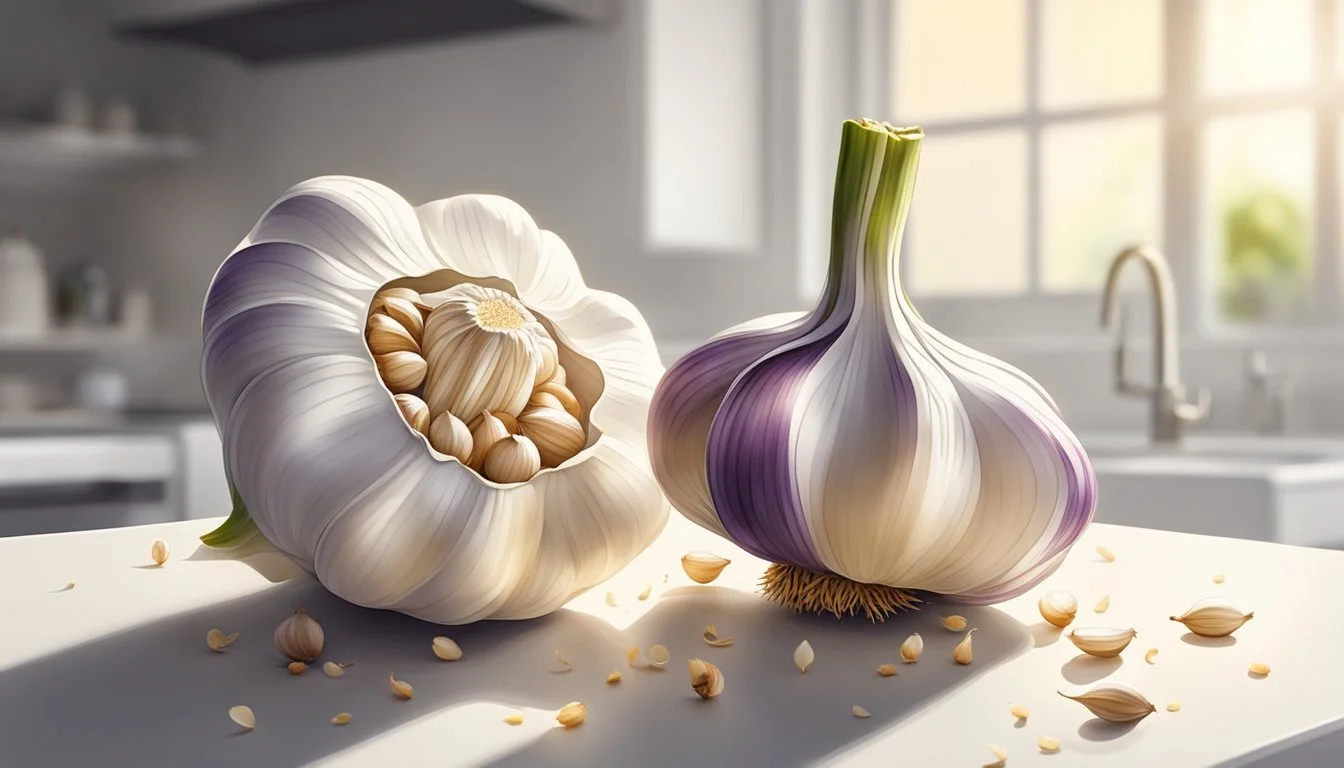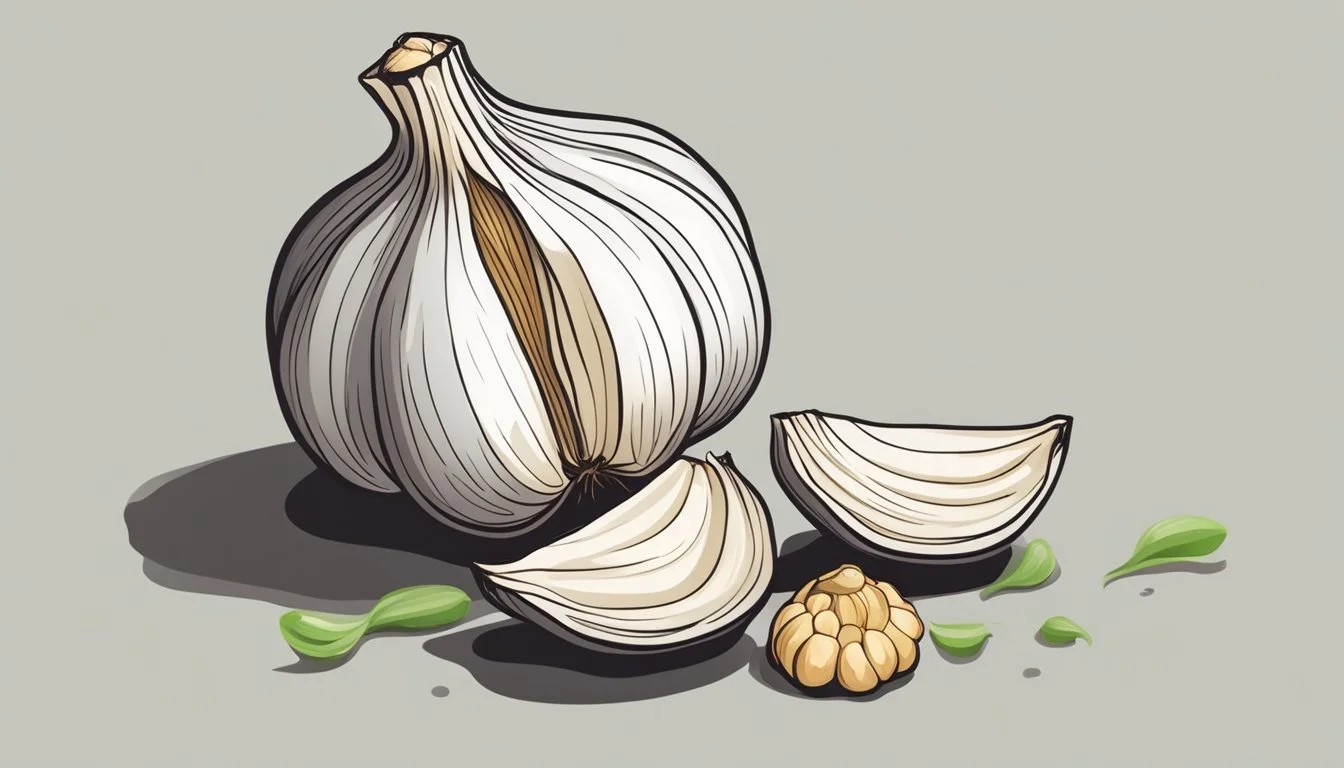Does Garlic Go Bad?
Understanding Shelf Life and Spoilage Signs
Garlic (What wine goes well with garlic?) is a staple in many kitchens worldwide, known not only for its unique flavor, but also for its numerous health benefits. However, like all fresh produce, garlic can go bad. Determining the freshness of garlic is simple when knowing the signs to look for. Fresh garlic bulbs should feel firm and tight, and the cloves should be plump and crisp when crushed or chopped.
Over time, garlic will begin to degrade. The common indications of garlic past its prime include cloves that are soft to touch, yellowed, or even starting to sprout. Sprouted garlic can still be used, though it may have a slightly altered taste, whereas softened garlic indicates it is on the verge of going bad. While the presence of a sprout isn't necessarily a sign of spoilage, it does suggest the garlic is not at its peak freshness and could be less potent.
Proper storage is key to extending the life of garlic. Keeping garlic in a dry, cool place with good air circulation helps to maintain its quality. It's also worth noting that once the head of garlic is broken and cloves are removed, the remaining cloves will last a shorter period. Peeled or chopped garlic should be used within a week if stored in the refrigerator, as its shelf life diminishes once it's exposed to air and moisture.
Garlic Fundamentals
Garlic is a staple in many kitchens, revered for its pungent flavor and preservative qualities. Understanding how to identify fresh garlic and provide it with optimal storage conditions is essential to maintaining its quality.
Identifying Fresh Garlic
Fresh garlic bulbs should feel firm to the touch, indicating they are not spoiled. They will have a characteristic white appearance with a few purple streaks depending on the variety. The individual cloves of a garlic bulb are enclosed in thin, papery skins which should not be loose or appear overly dry. Any signs of sprouting from the top of the cloves can suggest aging, but small sprouts can be removed, and the garlic can still be used if the rest of the clove remains firm and white.
Indicators of Freshness:
Firmness: No soft spots or mushiness
Color: Bright white with possible purple streaks
Skin integrity: Tight, not loose or excessively dry
Optimal Storage Conditions
To store garlic properly and extend its lifetime, it should be kept in a cool, dry, dark place such as a pantry or cabinet. Ideal temperatures for garlic storage are between 60°F and 65°F. Garlic benefits from ventilation, so using a basket or a netted bag aids in preventing moisture accumulation, which can lead to mold. For peeled or chopped garlic, an airtight container is recommended in the refrigerator to maintain freshness. Storing garlic in oil should be done cautiously, as this can create a risk for botulism unless kept refrigerated and used within a strict time limit.
Storage Tips:
In the Pantry: Place in a mesh bag or basket for air circulation
In the Fridge (for peeled/chopped): Use an airtight container
Humidity: Keep it low to prevent spoilage
Temperature: 60°F - 65°F is optimal
By adhering to these fundamentals, one can ensure the longevity and flavor of their garlic.
Storage Techniques
Proper storage of garlic can significantly extend its shelf life and preserve its quality. Whether at room temperature, in the fridge, or frozen, different methods are suited for various forms of garlic, from whole heads to minced cloves.
Room Temperature Storage
Storing garlic at room temperature is ideal for whole, unpeeled heads. They should be kept in a cool, dry, dark place such as a pantry. A basket that allows for good air circulation is preferable over a sealed container, which can hasten spoilage. Properly stored, a whole head of garlic can last up to six months.
Location: Pantry or cupboard away from heat and light
Container: Mesh bag or paper wrapper
Shelf Life: Up to 6 months for whole heads
Refrigeration
Refrigerated storage is best reserved for peeled or chopped garlic. In the fridge, peeled cloves should be kept in an airtight container to prevent them from absorbing flavors and to extend freshness. Chopped or minced garlic, however, can clump and become watery, so it may be more practical to refrigerate only if immediate use is anticipated.
Container for peeled garlic: Airtight container
Shelf Life: Peeled garlic - up to 1 week
Freezing Garlic
Freezing is an excellent option for long-term storage of garlic. Whole heads, individual cloves, chopped, or minced garlic can all be frozen. For best results, spread peeled cloves on a baking sheet to freeze separately before transferring to a container or bag. This prevents them from clumping together. Frozen garlic does not need to be thawed before use in cooking.
Preparation: Spread peeled cloves on a baking sheet to freeze individually
Storage: Freezer-safe bag or container
Use from Frozen: Directly in cooking
Shelf Life: Extended, several months for frozen garlic
Shelf Life and Expiration
Garlic, as a durable culinary staple, has varying shelf lives depending on its form and how it's stored. Its longevity contributes to its popular use, but knowing the specifics of its expiration is crucial to maintain its quality and flavor.
Expected Garlic Lifespan
In optimal conditions, whole, unpeeled garlic heads maintain their freshness for up to five to six months when kept in a pantry. These conditions include a dry, cool, ventilated, and dark environment. Placing garlic in the freezer can extend its shelf life to up to twelve months.
Peeled vs Unpeeled Garlic
Unpeeled garlic fares better in terms of shelf life because the outer layers protect the cloves. Once garlic is peeled, its lifespan shortens dramatically. Peeled garlic cloves should ideally be kept in the refrigerator and used within one to two weeks. Freezing can further prolong their usability.
Chopped and Minced Garlic
Chopped or minced garlic deteriorates more quickly due to the greater exposure to air. It's best used within 24 hours when stored at room temperature, or it can last for up to seven days if refrigerated. Keep in mind that once garlic is cut, its flavor profile starts to change, so timely usage is recommended.
The Impact of Sprouting
Garlic that has begun to sprout can still be consumed, although the sprouts are often removed due to their bitterness. Sprouting doesn't necessarily mean the garlic has gone bad, but it indicates decreased quality. Sprouted garlic should be used quickly or it might lose its desirable characteristics.
Signs of Spoilage
When garlic goes bad, there are clear markers visible, olfactory, and by touch to identify spoilage without ambiguity.
Visual Indicators
Bad garlic exhibits distinct visual signs that signal its deterioration. Observers should look for:
Color Changes: Fresh garlic cloves are characteristically a creamy, off-white color. Spoilage is often indicated by yellowing or browning of the cloves.
Dark Spots: These are localized, dark-colored areas that may appear on the cloves, indicating the beginnings of rot.
An absence of these markers typically implies the garlic is still good to use.
Olfactory Signs
Garlic’s aroma is a strong indicator of its condition, and one should be cautious of:
Unpleasant Odor: Although garlic has a naturally pungent smell, a foul or sour scent is indicative of bad garlic.
A neutral sniff test can quickly discern bad smell from the potent, expected scent of garlic.
Texture Changes
Touch also matters when determining garlic quality. Key points to verify include:
Firmness: Fresh garlic is firm to the touch. Soft spots or a spongy texture suggest the clove is rotten and past its prime.
Textures deviating from a firm, resilient clove often mean the garlic has gone bad.
Health and Safety
Garlic is subject to spoilage like other fresh produce, which can lead to health risks if consumed. Understanding the dangers of spoiled garlic and the correct storage methods to prevent botulism is essential for food safety.
Risks of Consuming Spoiled Garlic
When garlic spoils, it can develop soft spots, discoloration, and an off smell. Consuming spoiled garlic may result in food poisoning, which can cause symptoms like nausea, vomiting, and diarrhea. The severity of food poisoning can vary, but it is particularly concerning for the elderly, young children, and those with compromised immune systems.
Soft spots and discoloration: A clear sign of spoilage, these can be cut away if minor, but widespread spoilage means the garlic should be discarded.
Off smell: Garlic has a characteristically pungent odor, but a sour or foul smell indicates spoilage.
Botulism in Stored Garlic
Botulism is a rare but serious illness caused by a toxin that can form in improperly stored garlic. Garlic infused oils or garlic stored in oil at room temperature can create an oxygen-free environment conducive to the growth of Clostridium botulinum bacteria.
Stored properly: Garlic should be kept in a cool, dry place with adequate ventilation to prevent spoilage and botulism risk.
Refrigerator: Peeled or chopped garlic should be refrigerated and used within a few days to prevent bacterial growth.
For garlic stored in oil, it must always be refrigerated and used within a week to ensure safety.
Best Practices for Garlic Longevity
To maximize garlic's shelf life and preserve its flavor, one must adopt specific storage methods and utilize appropriate usage techniques that are beneficial for chefs.
Effective Garlic Storage Methods
Temperature and Humidity: Garlic should be stored at a temperature of 32-50°F with a relative humidity of 50-60% for curing. These conditions aid in making the outer skins parchment-like, which is essential for longevity.
Containers: Garlic benefits from being stored in breathable containers such as mesh bags or baskets in a well-ventilated area.
Location: Choose a dark, cool, and dry place, away from sunlight to prevent sprouting. An unheated pantry or cellar is often ideal.
Usage Tips for Chefs
Inspecting Garlic:
Soft Spots: Check for mushy areas which suggest decay. Small brown or black spots can be trimmed away, but if widespread, the bulb should be discarded.
Sprouting: While sprouted garlic can be used, it is important to remove the green sprout to avoid bitterness.
Maximizing Freshness:
Keep bulbs whole to extend shelf life; individual cloves perish sooner.
Peel only as needed to ensure that the remaining cloves stay protected.
By following these guidelines, chefs can ensure their garlic maintains its best quality for cooking and flavoring dishes.
Frequent Questions
In this section, readers will learn how to assess the condition of garlic, understand the best storage methods for different garlic forms, and find answers to common questions about garlic's shelf life.
How to Determine Garlic's Usability
When questioning the usability of garlic, they should look for several indicators of quality. Garlic is considered bad if it has soft or mushy spots that are typically brown or black. Furthermore, if garlic sprouts, it's an indication that it's older, although small sprouts and firm cloves are still useable. A sulfurous, off odor and discoloration to yellow or brown are clear signs of garlic past its prime.
How to Store Different Forms of Garlic
Whole Bulbs of Garlic: They should be stored in a cool, dry place with plenty of ventilation to last several months. Peeled Cloves: These are best kept in the fridge in a sealed container for up to a week. Chopped or Minced Garlic: This form will only last a day or so before it goes bad, unless stored in oil or frozen, which can extend its usability.
Garlic Form Storage Location Expected Shelf Life Whole garlic bulb Cool, dry, airy place Several months Peeled garlic cloves Refrigerator in a sealed container Up to 1 week Chopped/minced garlic Refrigerator, in oil, or frozen 1 day / varies with storage
FAQs About Garlic Expiration
Q: How long does garlic last before it's not good to use? A: Whole garlic bulbs can last several months if stored properly, while individual peeled cloves may last up to one week in the fridge. Chopped or minced garlic should ideally be used within a day unless it's preserved by freezing or in oil.
Q: Can you freeze garlic? A: Yes, garlic can be frozen. They can freeze whole cloves or processed garlic as a paste or minced. Freezing can extend the life of garlic considerably, making it a convenient option for long-term storage.
Q: How can someone tell if garlic is no longer good to eat? A: Indications include softness, a rotten smell, visible mold, and discoloration. It's advisable to err on the side of caution and not consume garlic that shows any of these signs.






